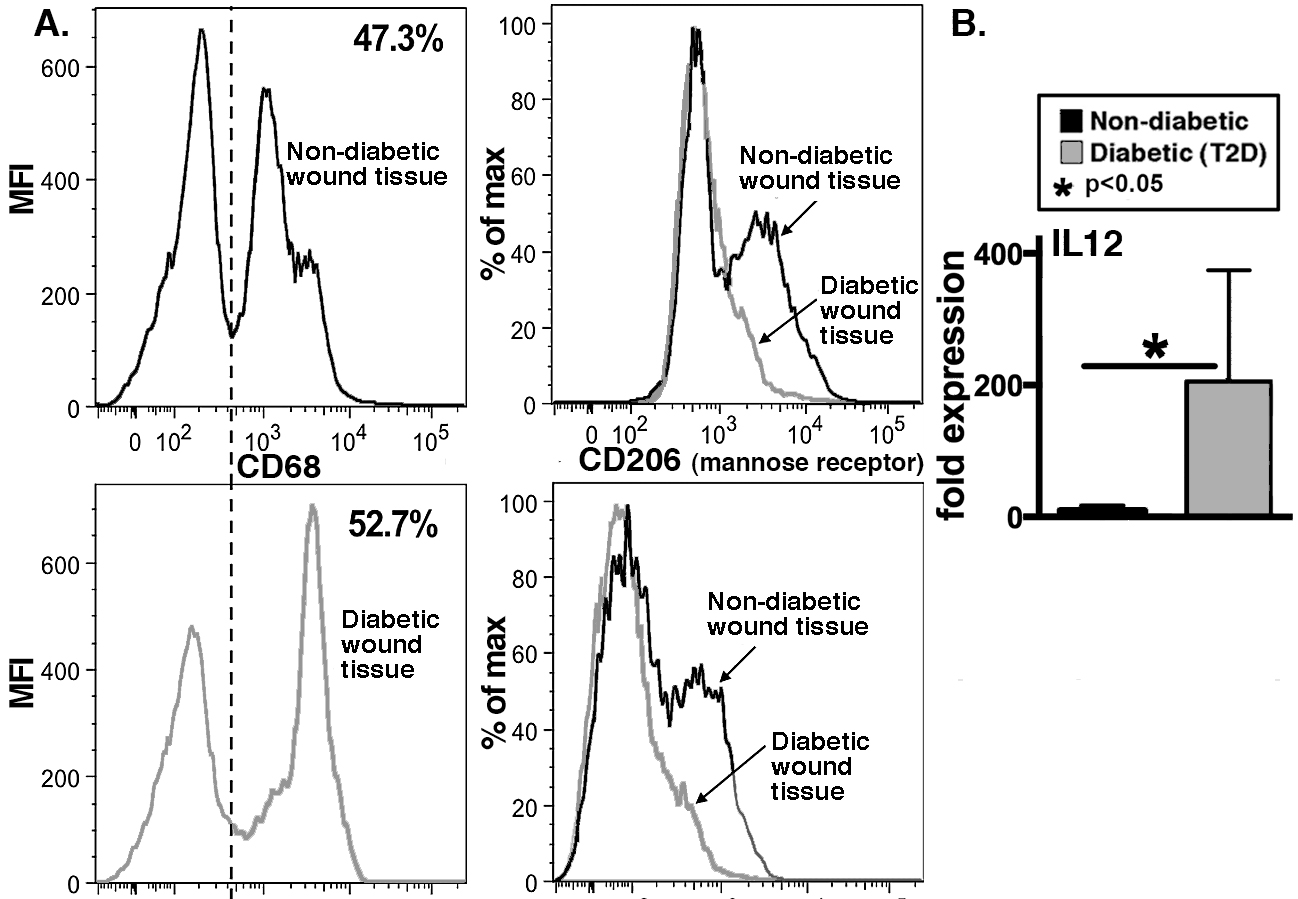Back to 2015 Annual Meeting Posters
Human Macrophages from Type 2 Diabetic (T2D) Wounds Display an Increased, Pro-Inflammatory M1 Phenotype
Huiting Chen, Amrita Joshi, William F. Carson, Nico Kittan, Emily Hogikyan, Dawn M. Coleman, John R. Rectenwald, Steve Kunkel, Katherine A. Gallagher
University of Michigan, Ann Arbor, MI
INTRODUCTION: Diabetic wounds are characterized by a chronic inflammatory state that is maintained by overexpression of pro-inflammatory cytokines generated by macrophages. In normal wound healing, macrophages mobilized from the circulation initially exhibit a pro-inflammatory 'M1' phenotype that is followed by conversion to an anti-inflammatory 'M2' macrophage phenotype to promote tissue repair. We hypothesized that macrophages isolated from human wound tissue and bone marrow from patients with Type 2 Diabetes (T2D) would exhibit increased pro-inflammatory 'M1' characteristics and decreased 'M2' repair phenotypes.
METHODS: Human wound tissue and bone marrow were obtained from 6 patients (N=3 with T2D; N=3 non-T2D) following amputation under our IRB-approved protocol. Immune cell isolations were performed immediately following surgery. Flow cytometry was performed on CD68+ wound macrophages isolated from chronic wound tissue. Cells were stained for two well-established M2 markers (M2- CD163+, CD206+). RT-PCR quantification of IL12 (M1 cytokine) expression in human bone marrow-derived macrophages (BMDM) was performed 6 hours after stimulation with lipopolysaccharide (LPS).
RESULTS: Human CD68+ macrophages isolated from T2D wounds showed a significant decrease in these M2 scavenger receptors compared to macrophages in wounds in non-T2D individuals. Functionally, upon stimulation with LPS, human T2D BMDM demonstrated exaggerated production of IL12, a key pro-inflammatory cytokine, compared to non-T2D controls. (Figure 1)
CONCLUSIONS: Macrophages appear to be poised towards an M1 phenotype and mount a distinct pro-inflammatory response in human T2D chronic wound tissue. Manipulation of macrophage function/phenotypes could allow for development of new therapies to prevent chronic inflammation in diabetic wounds.
Back to 2015 Annual Meeting Posters
